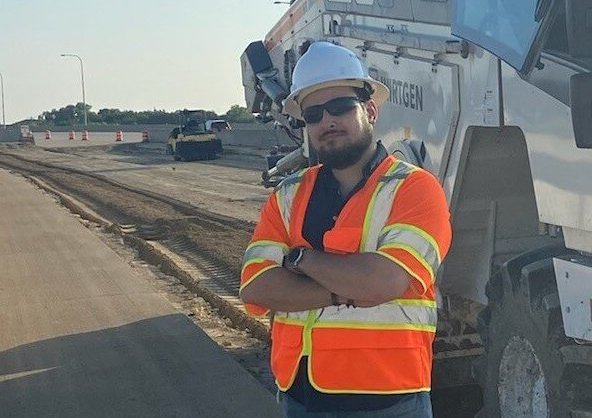Life at Flatiron
The One with the Interns: Survey

Hello, David here again! Today, I will be sharing what I learned during survey week as well as my personal experience with it.
Land surveying involves measuring and mapping out projects. Surveyors are the first people on-site at construction projects. They are experts who will take photos and basically measure out the land where the construction is going to take place. This is to ensure that everything will run smoothly, and the right amount of equipment and materials are present to accomplish the task.
The work of a land surveyor is very important to get a project done accurately and efficiently. They are responsible for land development, planning and final designs for any number of projects which can include buildings, highways and bridges. Any miscalculations or mistakes when it comes to surveying can put a dent in the progress and safety of any given project. Incorrect calculations can create the risk of gaps or overlaps in the finished project. It is important to note that only licensed land surveyors can legally do survey work on property. There are many parts and layers when it comes to surveying, so it is crucial that the work is done properly and accurately to guide the construction workers and get the job done as good as possible.
For me, a big part of survey week was learning how to use a total station (the primary survey instrument you might see driving down the road). In our project, we worked on paving a 12-foot-wide lane. First, we picked a 2-foot offset and placed a nail every 25 feet on the same offset. Then, we set up the track for the pavement machine. After that, the craft employees came in and hammered the nails and they set a string on it to show that everything was measured. The machine had a sensor that would drive along the string following the grade that was set up for it.
After this process we were able to get the six-inch depths of the pavement that we needed, as well as verify the grade. Other than this, we also worked on setting up the total station and taking several shots in order to set up the blade to get the elevation required. During that, we worked on removing an existing manhole, so we had to take three different shots and offset it by 2 feet and mark it in order to know where to begin digging.
Overall, the experience I had in my survey week at Flatiron was very positive and I learned a lot about the surveying process and the importance of it. I now feel confident with setting up the total station, taking shots and measurements, and planning for different tasks and projects.
